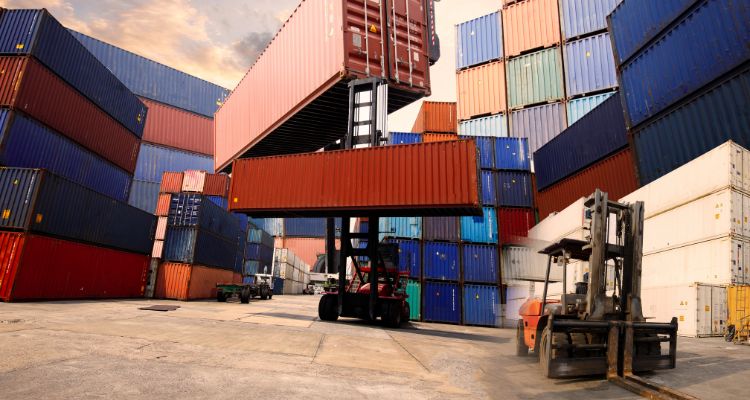Are you intrigued by the versatile applications of shipping containers, not only in the logistics and trade sector but also as innovative residential solutions?
We'll keep things simple and cover the prices of these containers in the shipping world. But guess what? It's not just about that – we're also diving into this cool trend of using shipping containers as homes.
This isn't just for big businesses; it's for folks like you who are curious about a different kind of housing that's unique and eco-friendly.
When it comes to container price determinants, several factors come into play. Elements such as the container's size, condition, age, demand in the container market, and prevailing economic conditions impact the final cost of shipping containers.
Whether you are a business owner, a logistics enthusiast, or just curious about container costs, we have got you covered with all the essential facts!
Understanding the dynamics used in determining the cost of new shipping containers will help you make smart decisions regarding shipments. Let’s go through the factors for pricing brand-mew containers:

Brand-new shipping containers are expensive, so opting for used or second-hand containers can be cost-effective. Understanding the pricing factors for used shipping containers, including condition, age, and previous usage, is crucial in making informed decisions.
Let's delve into the key factors affecting the cost of pre-owned containers and explore the potential cost savings they offer.
The primary pricing determinant for used containers is their condition. Containers in better condition with minimal wear and tear often command a higher price. Inspect for any structural damage, rust, or corrosion, as these factors can influence how protected your cargo is.
The age of a used container plays a significant role in pricing. Younger containers, with fewer years of service, are generally more expensive than older ones. However, older containers can still be cost-effective if they are well-maintained and meet quality standards.
The history of a used container's previous usage can affect its price. Containers that were used for less demanding cargo or had lighter utilization might be priced higher than those used for heavy-duty or hazardous materials transport.

Understanding the previous cargo carried can help assess the container's overall condition.
So, how do businesses utilize pre-owned containers for cost savings?

You must have come across the various container sizes, so which is the most ideal one for your business? Let’s look at the common container lengths and the standard container pricing.
The ISO (International Organization for Standardization) has established standard container sizes to streamline global trade. The most prevalent sizes are the 20-foot and 40-foot containers. These dimensions ensure compatibility and easy handling across various transportation modes.
Amongst other factors that govern shipping container costs, the type of container matters the most. Keep reading to find the different container types and their pricing:
Their pricing varies from standard containers due to the added space and suitability for bulky or tall cargo. A brand new 40-ft high cube container can cost anywhere between $4,750 and $7,900.
The complexity of refrigeration technology affects their cost, making them more expensive than standard containers. The cost of a brand new 20-foot reefer container costs around $18,036, making it one of the most expensive shipping containers.
The speciality pricing is influenced by the absence of a roof structure and the materials used in the manufacturing process. Thus, a brand new 20-foot open top container costs around $4,900.
The collapsible sides make it easier to load and unload cargo from the sides or the top, providing multiple access points. This feature accounts for its shipping charges, of $6,000 for a 20-foot container.
The shipping industry is always subjected to constant fluctuations in market trends. Such imbalances result from a global surge in e-commerce demand and container availability. A report by The Business Research Company reported that the global shipping containers market size grew from $10.24 billion in 2022 to $11.18 billion in 2023.
As the owner of our forward-thinking moving company, I keenly observe the dynamic landscape of shipping container costs. Evolving environmental regulations and industry standards may necessitate modifications to container designs and materials, potentially leading to increased production costs that could be reflected in pricing.

Despite the growth, container freight rates oscillated dramatically between January 2019 and June 2023. Statista concluded that the year 2021 saw an especially steep increase in global freight rates.
The year of the pandemic had a record price of 10,400 U.S. dollars in September 2021. But as of June 2023, the global freight rate index stood at almost 1,500 U.S. dollars.
Experts suggest that the high costs of shipping containers are projected to limit the growth of the shipping container market over the forecast period. It goes without saying that macroeconomic trends and changes in international trade policies can have ripple effects on the container industry and influence pricing.
The price range for used shipping containers typically falls between $1,500 to $6,000 USD, while brand new containers can cost anywhere between $2,200 and $19,000 on average.
Factors like container size, condition, age, and previous usage contribute to this wide pricing spectrum. Here are some of the shipping container price ranges from 2023, as reported by Container Xchange:
| Container Type | Container Size | Used Container Price | Brand New Container Price |
| Dry | 20-foot | $1,804 | $2,360 |
| 40-foot | $2,038 | $4,320 | |
| Refrigerated | 20-foot | $9,034 | $18,036 |
| 40-foot | $6,606 | $14,330 | |
| Open Top | 20-foot | $3,691 | $4,906 |
| 40-foot | $6,228 | $5,318 |
Additionally, container prices can differ based on the location of purchase. Regions with higher demand for containers, such as major port cities, may experience slightly higher prices due to increased competition and transportation costs.
Shipping container movement is measured in miles. On average, companies charge you anywhere between $3 and $5 per mile. However, the final cost is based on the type, size and weight of the cargo as well.
Fluctuations in the global shipping industry and international trade dynamics can impact container prices. During times of high demand or container shortages, prices may rise. Conversely, low demand or container surplus periods could lead to more competitive pricing.
Moreover, regional price differences worldwide may result from factors like local supply and demand, economic conditions, and manufacturing costs. Thus, staying informed with the trends and latest policies helps you run your business smoothly.
When purchasing shipping containers, consider the impact of factors such as delivery distance and transportation logistics as additional charges. Let's delve into key aspects affecting expenses in container shipping.
Customization and modifications allow customers to enjoy versatility and enhanced functionality in shipping containers. Keep in mind, any alterations to the basic shipping container add to the overall cost of the containers. Let’s look at how you can customize the shipment:
Customized shipping containers are gaining popularity owing to their adaptability. It further guarantees that delays or bad weather will not affect the product quality. However, the level of customization directly impacts the cost of shipping containers.
Basic alterations like adding doors may have a minimal effect on pricing, while more complex modifications, such as installing insulation or electrical systems, can significantly increase costs.
This blog explores the essential factors influencing the average cost of shipping containers. It takes into account the container size, type, and customization options of the container. Do not forget, the age and previous usage for used containers makes shipping cost-effective.
To make the best decision for your business or personal shipping needs, it is vital to evaluate your requirements and budget. Prioritize your individual needs, such as cargo specifications, destination and transportation demands.
Remember, understanding shipping container costs helps you make informed choices. Our final recommendation is based on the fact that a carefully planned container selection optimizes logistics operations and minimizes expenses.
Take the time to weigh the pros and cons of various container options and sizes, considering both your cargo demands and financial constraints. We hope you are able to strike the right balance between functionality and cost-efficiency.